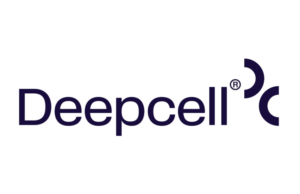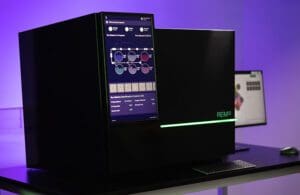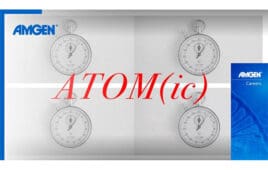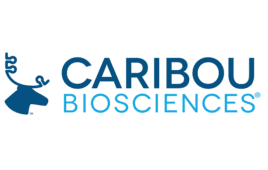 Deepcell co-founder Maddison Masaeli took an unexpected path from academic research to launching an AI-powered cell analysis platform. The company has raised close to $100 million in funding to support its mission. This includes a $73 million Series B round and an earlier $20 million Series A round. The company has entered into a research collaboration with NVIDIA and made generative AI a core focus of their research and development efforts.
Deepcell co-founder Maddison Masaeli took an unexpected path from academic research to launching an AI-powered cell analysis platform. The company has raised close to $100 million in funding to support its mission. This includes a $73 million Series B round and an earlier $20 million Series A round. The company has entered into a research collaboration with NVIDIA and made generative AI a core focus of their research and development efforts.
From electrical engineering to AI-powered biology
The Deepcell CEO since the company’s founding, Masaeli’s journey shifted from her bachelor’s study of electrical engineering to the life sciences when a chance encounter brought her to a biotech lab as a Harvard-MIT research scholar. “I randomly got introduced to this amazing biotech lab at Harvard at a social event,” she recalled. “I decided to go and explore and see what that was all about.”
The lab specialized in developing methods for tissue engineering and microfluidics. “I really liked how green the field was,” Masaeli recounted. This realization marked a turning point for her, steering her away from traditional engineering fields. She would eventually earn a Ph.D. in biomedical engineering at UCLA.

Maddison Masaeli
At UCLA, Masaeli worked under the guidance of Dino Di Carlo, a bioengineering innovator focused microfluidics, microfabrication, and nanotechnologies for applications spanning disease diagnosis to tissue regeneration. “It was amazing being at the forefront of single-cell research,” Masaeli reminisced. “I was really fortunate to have been part of that journey, working primarily on microfluidics devices and a bit of optics as well.”
Post-UCLA, Masaeli briefly joined the industry, working as a data scientist at a DNA sequencing company. Afterwards, she landed at Stanford, where she collaborated with Euan A. Ashley, Ph.D., associate dean of the School of Medicine at Stanford who is an expert in genomics. Masaeli and her Stanford collaborators moved to protect their ideas. “In 2016, we had this idea and decided to file a patent around it with the Office of Technology Licensing at Stanford,” Masaeli recalled.
Laying the foundation
This patent laid the groundwork for Deepcell. The team founded the company in 2017, bringing together experts from across disciplines: Masaeli lent her bioengineering background, while Ashley brought genomics expertise. They also tapped Mahyar Salek, an AI and machine learning technologist and entrepreneur. Their vision was bold – to launch a company that would blend AI, single-cell analysis, microfluidics, and high-resolution imaging to further understand cell morphology. “We envisioned a world where we can bring in AI and deep learning into cell phenotyping,” Masaeli said. “That’s what Deepcell is.”
A seed round from Andreessen Horowitz paved the way for the company’s initial growth and development. “And since then, we’ve been growing,” Masaeli said. “Now we’re about 100 people, and we’re bringing our first products to the market.”

Introducing Deepcell’s REM-I, which applies AI to cell morphology analysis.
One of those products is the REM-I. This platform combines high-resolution imaging, advanced microfluidics, and AI-powered analysis. The goal is to enable deep phenotypic profiling and sorting of cells without labels. REM-I promises to open up new discovery methods across a range of applications from cancer research to gene therapy screening.
Inside its NVIDIA partnership
Deepcell also has forged a research collaboration with NVIDIA focused on the development and adoption of advanced computer vision technologies in life sciences. The collaboration centers around using NVIDIA technologies such as the NVIDIA A4000 graphics processing unit and the NVIDIA Clara suite, to advance the understanding of cell morphology and to accelerate the use of AI-powered cellular analysis in various research areas such as cancer, stem cell, and cell therapy.
“Our platform does real-time inferences at its core, based on a self-supervised foundation model,” Masaeli said. The company trained this model on a proprietary dataset that now encompasses more than 3 billion images. “To train our models, we’ve been using Nvidia’s GPUs.” An industry-wide shortage in GPUs led Deepcell’s technical teams to have in-depth conversations with Nvidia, which was focusing on prioritizing GPU allocation. “The Nvidia team opened up this whole conversation around their interests in the [advanced biomedical imaging] and some of the work that they’ve been doing,” Masaeli added. It quickly became apparent to both sides that a partnership could be valuable.
Speaking of the alliance with NVIDIA, Masaeli said, “it’s quite rare to see a tech company with such extensive domain knowledge.” She noted that the conversations between the two companies in recent months have been “incredibly in-depth.” Masaeli noted that while many tech companies show enthusiasm for the life sciences by providing resources or fee capabilities, NVIDIA’s team is taking a more proactive approach. “They’re not just interested; they’re deeply involved,” she said. “They’re right down in the weeds with us.”
Filed Under: Biotech, Drug Discovery and Development, machine learning and AI, Women in Pharma and Biotech



